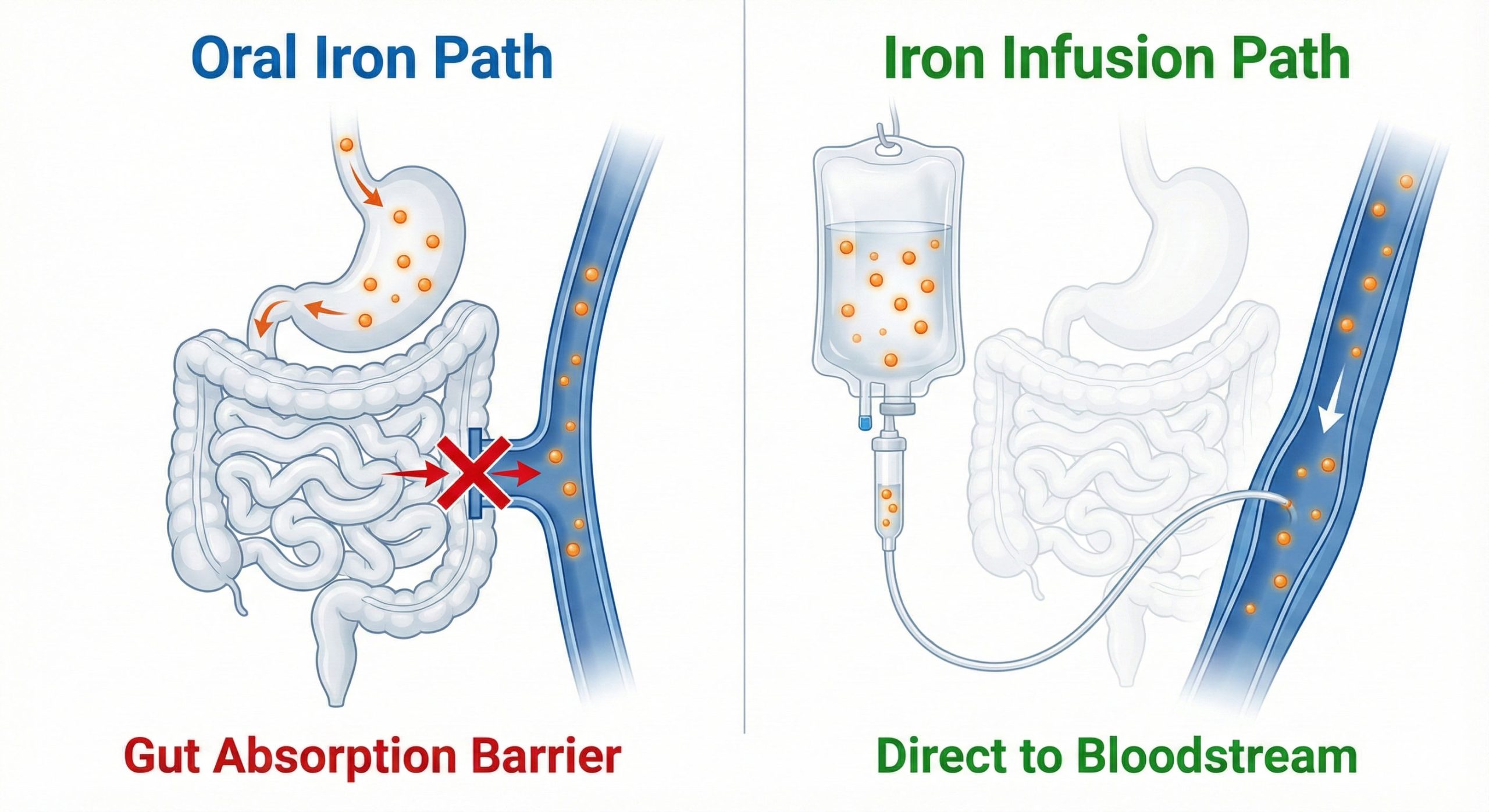If you’ve been advised to have an iron infusion, you may be wondering what the process involves and what you can expect on the day. At Clarendon Medical, our team ensures every infusion is delivered safely, comfortably, and in a calm, clinical setting so you can focus on feeling better.
Before Your Appointment
Your GP or nurse practitioner will have confirmed your iron deficiency through blood tests and discussed the most appropriate treatment for you. Your treating doctor will issue you a prescription for intravenous iron.
Before your appointment, please:
- Eat normally on the day, there’s no need to fast.
- Stay hydrated with water before and after your infusion.
- At Clarendon Medical, we can dispense your prescribed iron on site, or you can collect your prescribed iron from your preferred pharmacy and to bring it with you to the appointment.
- Wear loose, comfortable clothing, especially around your arms.
- Tell your clinician if you are pregnant, have had an allergic reaction to an iron infusion before, or take regular medications.
You’ll be guided through consent and safety checks before treatment begins.
During the Infusion
An iron infusion is a simple and safe procedure performed by our experienced nursing and medical team. Here’s what happens:
- Cannula placement: A small IV cannula is inserted into a vein, usually in your arm.
- Preparation: The iron is diluted and attached to an infusion line.
- Infusion time: The infusion typically takes between 15 and 45 minutes, depending on the formulation used.
- Monitoring: You’ll be seated comfortably and closely monitored throughout. Some people may feel a mild metallic taste, warmth, or lightheadedness; these sensations are usually brief and harmless.
After the Infusion
Once your infusion is complete, you’ll remain in the clinic for around 15–30 minutes to ensure you feel well before leaving.
It’s normal to experience:
- Mild fatigue or lightheadedness for a few hours
- A small bruise or tenderness at the cannula site
- Slight darkening of the skin around the injection site (rare)
Most people can return to normal activities straight after their appointment, though we recommend avoiding strenuous exercise for at least 24 hours. Drinking plenty of water and resting if needed can help.
When Will I Feel Better?
Everyone responds differently, but many patients report feeling noticeably better with improved energy, mood, and focus within a few days to a few weeks after their infusion. Your clinician may recommend repeat blood tests in 6–8 weeks to check your levels and determine whether further treatment is needed.
Safety and Care
Iron infusions are a safe and effective way to restore iron levels quickly. At Clarendon Medical, all infusions are performed under medical supervision, using evidence-based protocols and high-quality iron formulations. Any risks or side effects are carefully discussed before your treatment.
Next Steps
If you’re booked for an infusion or think you may need one, our team is here to support you every step of the way. In our next post, we’ll cover how to maintain healthy iron levels after your infusion including practical nutrition and lifestyle tips.
FAQs
Q1: How long does an iron infusion take?
A1: The infusion itself may take anywhere from 15 to 60 minutes, depending on the type of iron and the volume required. You may also be asked to stay briefly after for monitoring.
Q2: Will I need more than one infusion?
A2: That depends on your iron levels and how your body responds. Some people only need one, while others may require additional infusions after follow-up testing.
Q3: Is it safe to drive afterward?
A3: Most people are fine to drive home, but if you feel light-headed, unwell, or tired, it’s safer to rest and arrange alternative transport if needed.
Q4: How soon will I feel better?
A4: Some people feel an improvement in energy within a few days, but for most, it can take a few weeks. Your GP will monitor your progress through follow-up tests.
Q5: What if I experience side effects later at home?
A5: Mild symptoms may resolve on their own, but you should contact your clinic or GP if you’re unsure or if symptoms worsen or persist.
Disclaimer
This article is for general informational purposes only and does not constitute medical advice. All medical treatments, including iron infusions, should be discussed with your GP or specialist to ensure they are appropriate for your specific health needs. Clarendon Medical provides iron infusions under medical supervision in accordance with Australian healthcare standards and regulatory guidelines.



